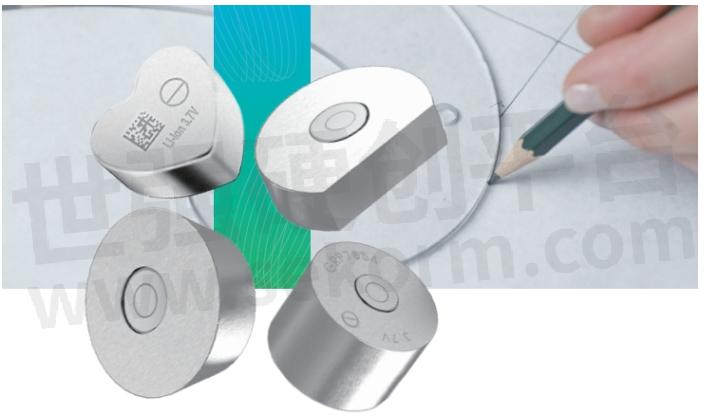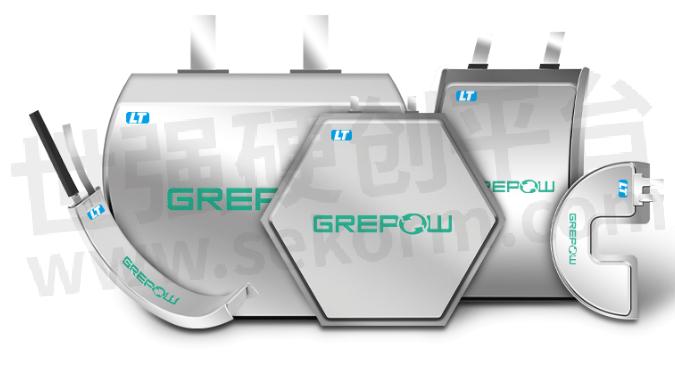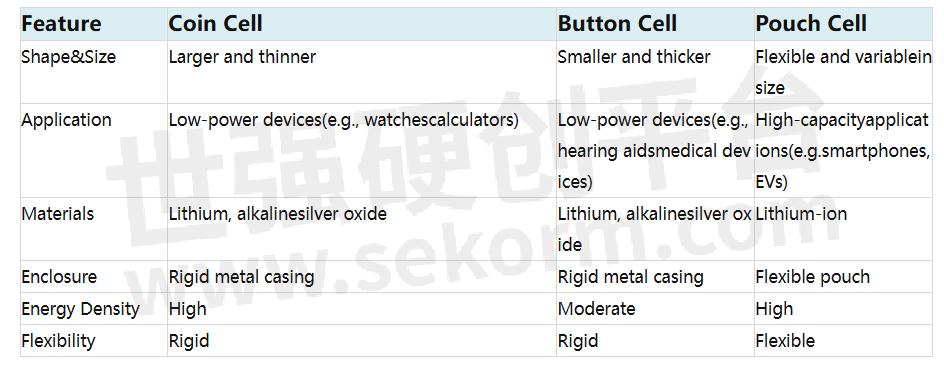Coin Cell vs Button Cell vs Pouch Cell: Understanding the Differences




In the world of batteries, various types cater to different needs, from compact electronics to high-performance applications. Coin Cells, Button Cells, and Pouch Cells are among the most commonly used types, each offering unique characteristics and applications.

Fig.1
What is a Coin Cell?
A coin cell, also known as a watch battery due to its frequent use in watches, is a small, round battery typically composed of a metal casing containing the electrode materials and the electrolyte. These batteries are often sealed to prevent leakage and are known for their compact size and reliability in low-power devices such as calculators, watches, and small medical devices.
What is a Button Cell?
Similar to coin cells, button cells are small, round batteries encased in metal with the electrode materials and electrolyte inside. The key difference lies in their application and size variations. Button cells are used in a wide range of applications, including hearing aids, remote controls, and small electronic devices. They come in different sizes and are known for their stable voltage output over time.
What is a Pouch Cell?
Pouch cells, also known as flexible batteries, diverge in design from coin and button cells. They consist of flexible packaging materials such as aluminum laminated films that house the electrodes and electrolyte. Pouch cells are lightweight, compact, and offer higher energy densities compared to their rigid counterparts. They are commonly used in applications requiring high energy density and custom shapes, such as smartphones, tablets, and electric vehicles.

Fig.3
Coin Cell vs Button Cell vs Pouch Cell: What's the Difference?
Coin cells and button cells are small, round batteries often used in low-power applications, but they differ in size and thickness. Coin cells are typically larger and thinner compared to button cells. Pouch cells, on the other hand, are flexible and lightweight lithium-ion batteries used in high-capacity applications like smartphones and electric vehicles. The materials used, the enclosure type, and the applications they are suited for also differ among these three battery types.
Table.1

Advantages and Disadvantages of Coin, Button and Pouch CellCoin Cell
●Advantages: Compact size, reliable performance in low-power devices.
●Disadvantages: Lower energy density, non-rechargeable in most cases.
Button Cell
●Advantages: Versatile applications, stable voltage output.
●Disadvantages: Limited energy capacity, typically non-rechargeable.
Pouch Cell
●Advantages: High energy density, lightweight, customizable shapes.
●Disadvantages: More expensive, less mechanically robust than rigid cells.
FAQCan coin cells be recharged?
Most coin cells are non-rechargeable. However, there are some rechargeable variants, usually labeled as LIR (Lithium-Ion Rechargeable).
How to recharge a button cell battery?
Recharging a button cell is not typically recommended unless it is specifically designed to be rechargeable, such as some lithium-ion button cells. Attempting to recharge non-rechargeable button cells can be dangerous.
Rechargeable Coin Cell vs Non-Rechargeable Coin Cell: What's the Difference?
When selecting a coin cell battery for your devices, it's crucial to understand the differences between rechargeable and non-rechargeable options. Rechargeable coin cells, often based on lithium-ion technology, are designed for applications that require frequent battery replacement and recharging, making them ideal for high-usage devices. Non-rechargeable coin cells, on the other hand, use chemistries like lithium, alkaline, or silver oxide, providing long shelf life and stable voltage, suitable for low-power, long-duration applications. Key differences include lifespan, capacity, cost, and environmental impact.
Table.2

What's the lifespan of coin cells?
The lifespan of coin cells varies depending on usage and the specific type. Generally, they can last between 3 to 10 years in storage, with lithium coin cells often having the longest lifespan.
- +1 Like
- Add to Favorites
This document is provided by Sekorm Platform for VIP exclusive service. The copyright is owned by Sekorm. Without authorization, any medias, websites or individual are not allowed to reprint. When authorizing the reprint, the link of www.sekorm.com must be indicated.
Recommend
Rechargeable Coin Cell Applications
2024-08-07 - Technical Discussion Rechargeable coin cells are a versatile and sustainable power solution for a wide range of modern electronic devices. Their compact size, high energy density, and reusability make them ideal for applications where space is limited, and reliability is crucial. As technology continues to advance and the demand for sustainable energy solutions grows, the use of rechargeable coin cells is expected to expand, further solidifying their importance in the world of portable electronics.
Prismatic vs Pouch vs Cylindrical Lithium Ion Battery Cell
2024-02-05 - Technical Discussion Lithium-ion batteries have become the energy storage solution of choice for a myriad of applications, ranging from portable electronics to electric vehicles and renewable energy systems. Within the realm of lithium-ion technology, there are various cell designs, each with its unique characteristics and applications. In this article, we delve into the world of prismatic, pouch, and cylindrical lithium-ion battery cells, comparing their structures, advantages, and use cases.
What Is a LIR1254 Button Cell Battery?
2024-10-17 - Technical Discussion The LIR1254 button cell battery exemplifies the blend of compact design and rechargeable technology, making it a vital component in various modern devices. Understanding its specifications, such as size and voltage, is essential for ensuring compatibility and optimal performance in applications ranging from wearables to IoT systems.
What is a coin and button cell and how to read the common models
2022-05-06 - Manufacturer News Compared with the disposable ones, the rechargeable lithium-ion button battery has become the mainstream due to proper prices or being environmentally friendly, and the development of lithium battery technology and the ever-changing electronic products, especially TWS headphones, electronic cigarettes, rechargeable car keys, rechargeable hearing aids, etc.
Which Is Better For TWS Earphones, Steel Shell Button Cell vs Soft Pack?
2022-06-04 - Design Article Grepow talks about Steel shell button cell and soft pack button battery pros and cons comparison.
Application of 5.5V type-V Coin cell Supercapacitor
2025-09-27 - Application solution Article The article discusses the diverse applications of 5.5V coin cell supercapacitors, including portable and wearable electronics, memory backup, RTCs, industrial and IoT sensors, energy harvesting systems, automotive power assistance, emergency lighting, medical devices, and high-frequency power applications. Variants like 0.1F, 0.33F, and 1.5F models are highlighted for their compact size, long cycle life, and rapid charge-discharge capabilities.
The Advantages of Coin cell Type C Super Capacitors
2025-09-26 - Product Introduction 3.6V Coin Cell Type C Supercapacitors offer high-temperature resilience, compact design, and super farad capacity ranging from 0.1F to 1.5F. They support rapid charging/discharging, easy installation, long cycle life, and are suitable for portable devices and microelectronics.
Notes on Watch Battery Replacement
2024-11-28 - Product Introduction Electronic watches are more accurate, stable and convenient than mechanical watches. Batteries are the energy source of electronic watches. There are many types of watch batteries, but there are three main types commonly used: CR2025, CR2032 and CR2016. When the power of the electronic watch is low, the battery should be replaced in time to avoid affecting normal use.
What ag battery is equivalent to cr1220
2025-09-25 - Device Selection Article The CR1220 is a widely used lithium coin cell battery with a compact size (12mm diameter × 2.0mm thickness) and a nominal voltage of 3V. Its low self-discharge rate, long shelf life, and stable performance make it indispensable in devices like watches, calculators, key fobs, and medical equipment. However, users often encounter situations where the CR1220 is unavailable, prompting the need for equivalent alternatives. This article explores compatible AG-series and other lithium coin cell batteries, analyzing their specifications, performance, and suitability as CR1220 substitutes.
What Are The Popular Models of Button and Coin Cell Battery Connectors Sold Well by Kinghelm
2024-10-18 - Device Selection Article Kinghelm offers a variety of high-quality battery connectors for different applications, ensuring reliable power connections. Their products cater to compact devices and high-performance electronics, with options for both button and coin cell batteries. Based in Guangxi Province, Kinghelm is committed to quality and innovation.
What uses a cr1632 battery
2025-08-28 - Product Introduction The CR1632 battery, a 3V lithium manganese dioxide coin cell, is widely used across automotive, consumer electronics, industrial, marine, and medical sectors due to its compact size, stable voltage, and long lifespan. It powers key fobs, wearables, real-time clocks, and medical devices. Variants like the CR1632H offer enhanced capacity and temperature tolerance, supporting growing IoT and wearable technology demands.
220mAh CR2032 Button Battery is Used in Different High-power Electronic Devices
2023-10-20 - Product Introduction Button battery is a small, flat cylindrical single-cell battery made of metal. It is mainly designed for portable electronic devices, such as toys, watches, computers, etc. The typical model of this battery is the CR2032 button battery.
Steel-Shell vs. Soft Pack Coin Cell Batteries for TWS Earbuds: Which is Better ?
2023-06-28 - Manufacturer News The mainstream TWs headset battery types currently on the market are steel-cased button batteries and soft pack button batteries. The two have differences in the amount of charge, shape, and many other aspects, so TWS headphones with Steel-Shell or Soft Pack Coin Cell Batteries cells are good.
Grepow 200mAh 3.7V Rectangle Shaped Lipo Battery GRP5811047
2025-08-27 - Product Introduction GREPOW specializes in lithium-polymer and shaped batteries, offering integrated solutions for smart, mobile, and wearable electronics. The GRP5811047 model features a 200mAh capacity, compact size, and flexible design for space-constrained applications.
Omnergy Brand Blister Package Lithium Battery- Compact Lithium Battery with Strong Battery Core, Intelligent Application of “strong Core“ Design
2024-03-30 - Product Introduction Omnergy brand batteries are produced by the smart factory of Power Glory Company. As the drafting and formulation unit of the original battery industry standards, Omnergy brand button battery with blister packaging and cylindrical battery with blister packaging have been widely used in various micro electronic products. Rich application scenarios include: car keys, remote controls, blood glucose meters, electronic scales, motherboards, electronic watches, PCs, anti-lost devices, calculators, toy cars, etc.
Electronic Mall
 Auth. Dist.
Auth. Dist.
 Auth. Dist.
Auth. Dist.
 Auth. Dist.
Auth. Dist.
 Auth. Dist.
Auth. Dist.
 Auth. Dist.
Auth. Dist.
 Auth. Dist.
Auth. Dist.
 Auth. Dist.
Auth. Dist.
Integrated Circuits
Discrete Components
Connectors & Structural Components
Assembly UnitModules & Accessories
Power Supplies & Power Modules
Electronic Materials
Instrumentation & Test Kit
Electrical Tools & Materials
Mechatronics
Processing & Customization

























































































































































































































































































































































































































































































































































































































































































































































































































































































































































































